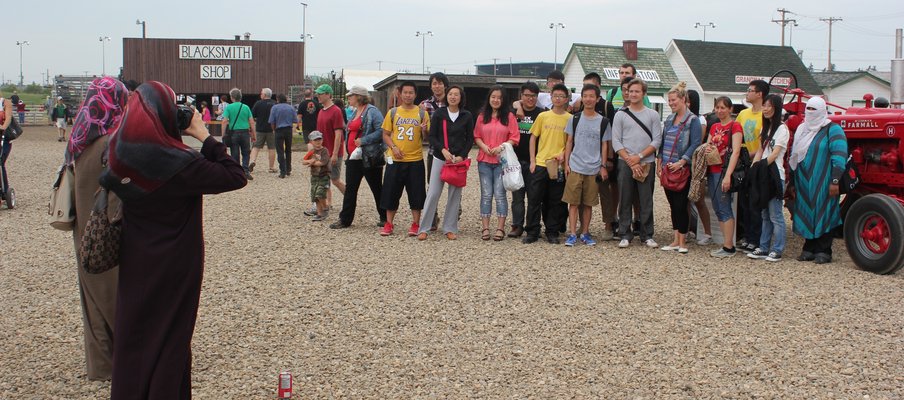
Museums Without Walls: Getting the conversation started on ecomuseums
Several Saskatchewan communities are bringing the concept of an ‘ecomuseum’ to the province.
Ecomuseums - also known as ‘museums without walls’ – provide a framework for sustainable community development by leaving natural and cultural heritage objects in place – rather than being collected and placed in a traditional museum – and having the community work together to understand and show off the objects’ significance.
Since first developed in Europe in the 1970’s, hundreds of ecomuseums now exist throughout the world. Until recently there were none in Saskatchewan, but several communities are working to change this. The Saskatchewan Ecomuseum Initiative steering committee, which is chaired by Glenn Sutter from the Royal Saskatchewan Museum, and includes representatives from Heritage Saskatchewan, The National Trust for Canada, Museums Association of Saskatchewan and SaskCulture, is working with the communities of Indian Head, Wolseley, Nipawin, North Central Regina and Val Marie to bring these wall-less museums to the province.
According to Sutter, ecomuseums demonstrate the role of living heritage in daily life. ‘Living’ may not be the adjective generally used to describe ‘heritage’, but it’s easy to understand. It refers to the fact that our values, beliefs, and ways of life are shaped by family, friends and teachers, as well as our own lived experience. Living heritage in turn, shapes our landscapes, our identities, and our sense of belonging and place in the world. Who we think we are, where we come from, where we are, and what we do, in large measure determines our ability to participate in, and contribute to, our communities.
“The aim of an ecomuseum is to enhance quality of life within the community, to make the community a place where people want to live, work, and play; a place people are proud to call home and where they share a strong sense of belonging,” says Sutter. These outcomes are achieved by bringing community members together in conversations about a living heritage that is connected to the present, and by providing a public space for discussion of different and shared value systems. ‘
By enhancing the role of living heritage in our communities, ecomuseums can contribute in many positive ways to quality of life issues, such as: healthy, active living for seniors; developing welcoming communities for newcomers and visitors; building social cohesion and creating culturally sensitive learning environments and workplaces; and highlighting and conserving important wildlife areas. As a framework for sustainable community or regional development, an ecomuseum can bring people and communities together to engage in an ongoing conversation about what really matters and how they can become part of positive change in their communities.
“Communities are encouraged to start the conservation,” says Sutter. “Talk to your neighbours. Talk to local business owners. Talk to your elected representatives. Ask them what they believe are the most valued aspects of the community and why.” If you are interested in the concept of an ecomuseum and want advice on how to proceed in your community, you can contact Glenn Sutter at the Royal Saskatchewan Museum, glenn.sutter@ gov.sk.ca, ph. 306-787-2859.


 Engage - Volume 5, Issue 1, Fall 2014
Engage - Volume 5, Issue 1, Fall 2014